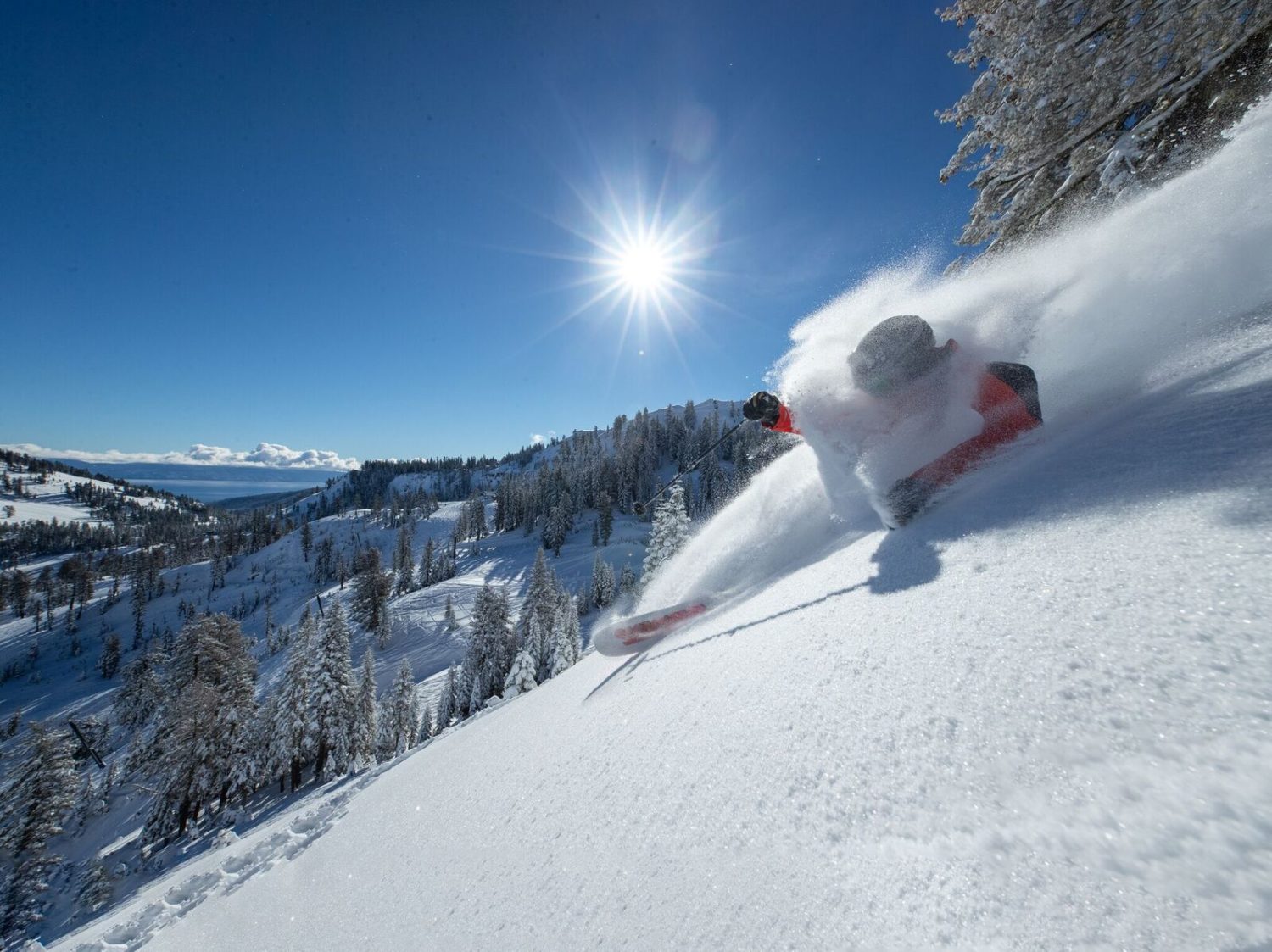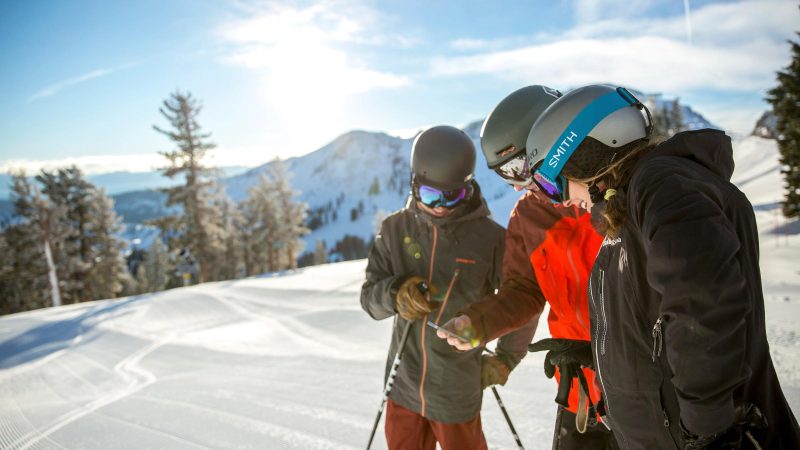
This article was first published on August 24, 2024, and has been updated to reflect recent achievements and records.
In the age of digital innovation, tracking apps have reshaped the skiing experience by transforming how skiers and snowboarders engage with the sport. These apps, often equipped with advanced GPS and data analytics, provide skiers with detailed insights into their performance, such as vertical feet, runs, speed, altitude, distance covered, and personal bests. No longer reliant on guesswork, riders can now monitor their progress in real time, set personal goals, and share their achievements with friends and the broader skiing community.
But have these apps changed the way people ski? Does it push them past their limits to reach the next milestone? In recent years, there have been numerous stories of individuals logging 100,000-plus vertical feet in a day and multiple millions of vertical feet in a season, including, at the time, a world record. For this reason, tracking apps have reshaped the skiing landscape, whether that is for the positive or negative.
The concept of using satellites for navigation started in the 1960s, and the GPS project was originally started by the U.S. Department of Defense for military use in the 1970s. By 1995, the GPS was fully operational, providing coverage for both military and civilian use. The development of consumer-grade GPS technology and mobile apps during the early 2000s enabled skiers and snowboarders to use these tools to enhance their experience on the slopes.
Technological advancements, GPS accuracy, and app development have led to more sophisticated and feature-rich ski-tracking apps. These apps now offer social sharing, detailed analytics, and enhanced safety features. The trackers have been evolving for about two decades, becoming increasingly popular and refined with each passing year and impacting skier behavior.
Snowbird Case Study
One place where it appears evident that rider behavior has changed is Snowbird, Utah. In 2020, Snowbird launched its app that uses the smartphone’s GPS to track vertical feet. The technology uses a grid of the mountain when on a slope to track where riders go on their descent.
The app’s public leaderboard shows the number of days skied, vertical feet, and number of lifts. The most remarkable achievement was Steffi Eyerkaufer’s tracking of over nine million vertical feet during the 2023-24 season.
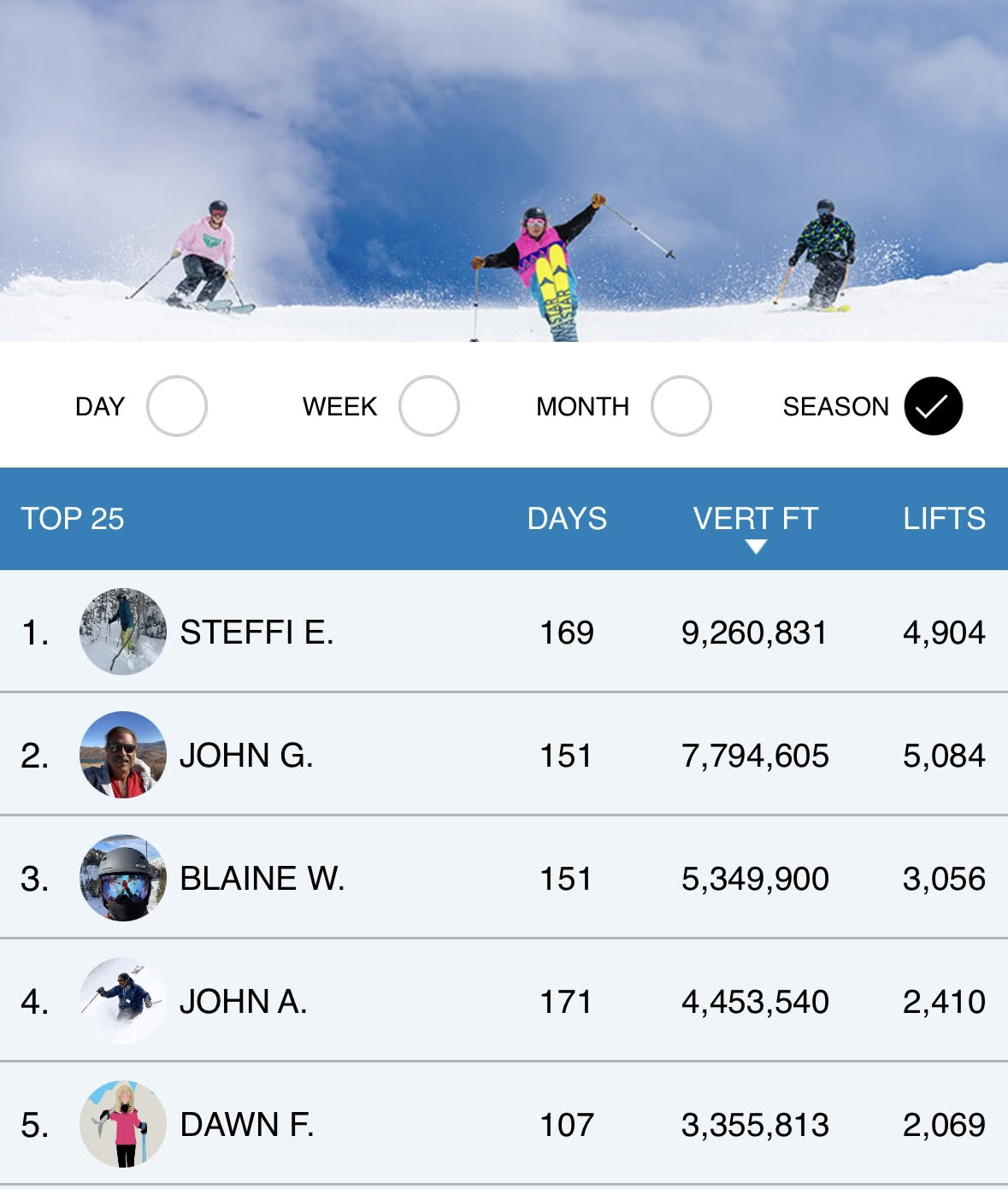
Local Salt Lake City skier, John Gordon, who ended up second on the leaderboard for vertical feet after Eyerkaufer, admitted that the tracker app is a huge motivator and talked about how people are skiing more than ever.
“Once you start tracking, it changes your behavior,” Gordon admitted. “This was true because I didn’t track until four years ago. Once I started tracking, there was a leaderboard for every single category. There’s a leaderboard for the day, the week, the month, and the season, and you just get hooked on this, where you see if you can do something a little better tomorrow or the next day. It just changes your behavior.” Skiers will take more runs and show up on time to get an early chair because they can get more vertical with more time on the mountain.
The competition has increased after each passing season. “Over the last few years, with the tracker, everything has escalated,” Gordon said in 2024. “The first year when people were tracking, the number one guy was five million, and Steffi was four million. The next year, I was 6.5 million, and Steffi was a little over 7 million. Then the next year, I hit 7 million, and Steffi was well over 8 million. Now this year it’s escalated even more. She’s at 9 million and I’m at 7.5.”
- Related: Steamboat, CO, Father and His 4 Kids Ski Over 10 Million Combined Vertical Feet this Season
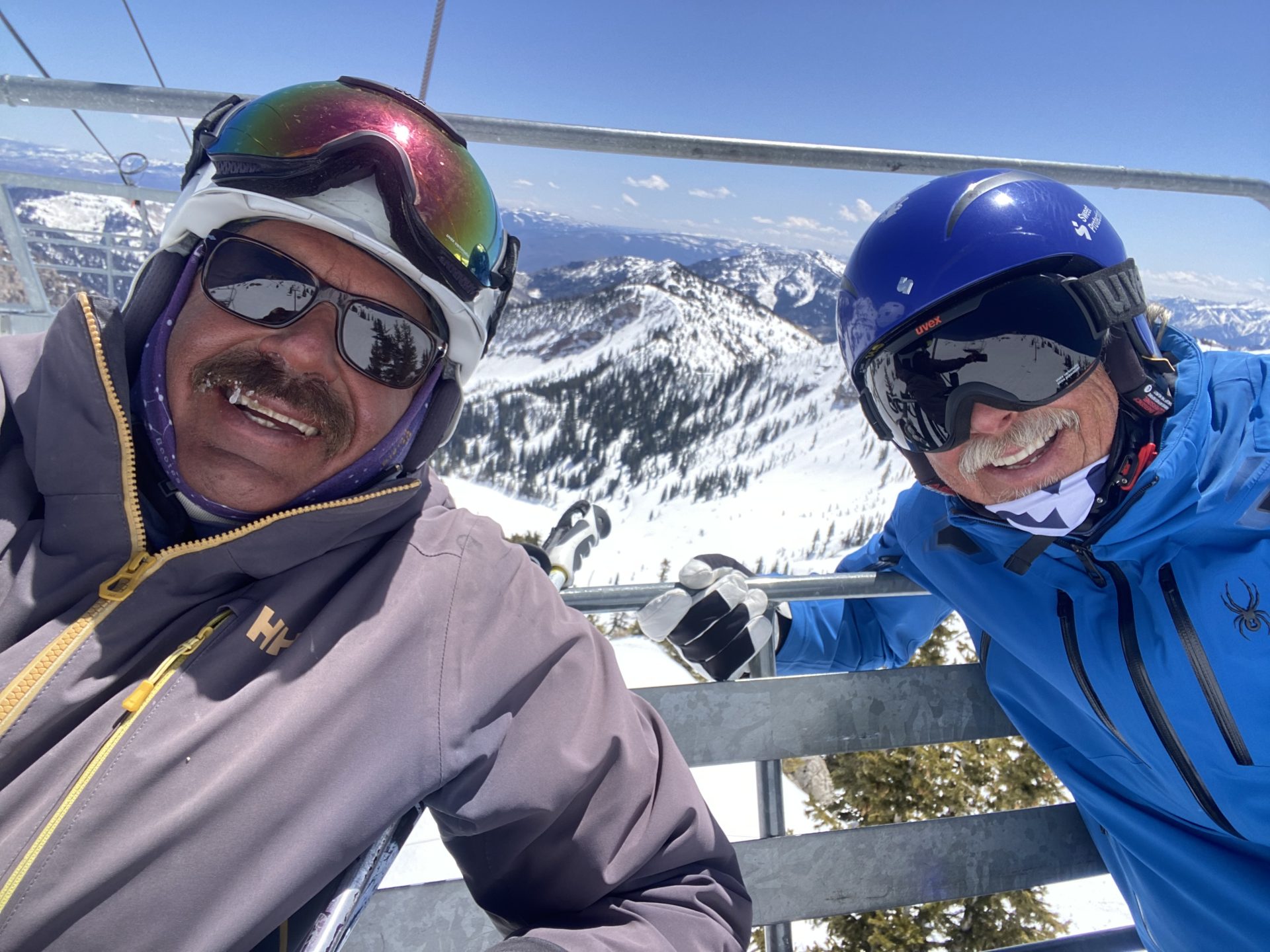
Michael Burke is another local Utah skier who agrees that the app has changed how people ski. “What’s fun about the app is that four years ago, when it first came up, it was like ‘Who is this Steffi person? Let’s find out who it is.’ And now everybody knows everybody. It’s like a big family; it’s a riot because you say hi to people, you ride the chair with people, and that’s a wonderful thing that it’s done. It’s brought everybody together around the leaderboard. I push myself to see if I can do better than previously, or to see if I can get 70,000 vertical feet in a day.”
Burke has a definitive stance on how tracking apps have influenced behavior. “I don’t know exactly how all these different ski apps have changed skiing, but they truly have,” he admitted. “I can’t say for the better or the worse. There’s good stuff and bad stuff. You can tell the people trying to get vertical because they cut lines and get on chairs as fast as possible. You sit back and laugh and say, ‘If it’s that important to you, go for it.’”
Burke also told a story about someone he knew who was taking another friend skiing for the day, and when he almost made it to the mountain, he realized he had forgotten his phone. His friend had to go back home, adding over an hour to the drive to get it because he was so into getting credit for his vertical saying, “If I don’t have my phone, what’s the point?” But according to Burke, the point is to ski and enjoy yourself. “Who cares about the vertical?” Burke scoffed.
Data From Ski Tracks
Not all tracking apps will use GPS, but one of the first and most popular apps on the market that did is Ski Tracks. The app was designed specifically for skiers and snowboarders, and it has become one of the go-to apps for winter sports enthusiasts looking to track and analyze their performance on the slopes. Along with being battery-efficient on the phone, the app will track speed, vertical, distance, altitude, in-depth run analysis, mapping, and more.
Steven Wilson is the founder and CEO of Ski Tracks. He said the number of downloads has been consistent over the last several years, with 250,000 to 300,000 downloads every year and over 4.5 million downloads since the app was designed in 2009. The app is available for a one-time fee and allows users to track their activity as much as they want.
“We tend to see more people doing more days on the mountain,” Wilson said. “We used to have people go for a couple of days or a week a year. We now see more people doing longer or more trips with our product. It’s difficult to know because we are looking at a global picture and not a specific breakdown of each mountain to find out why, but I suspect it has something to do with how ticket prices are sold and more people are buying season passes and skiing more days.”
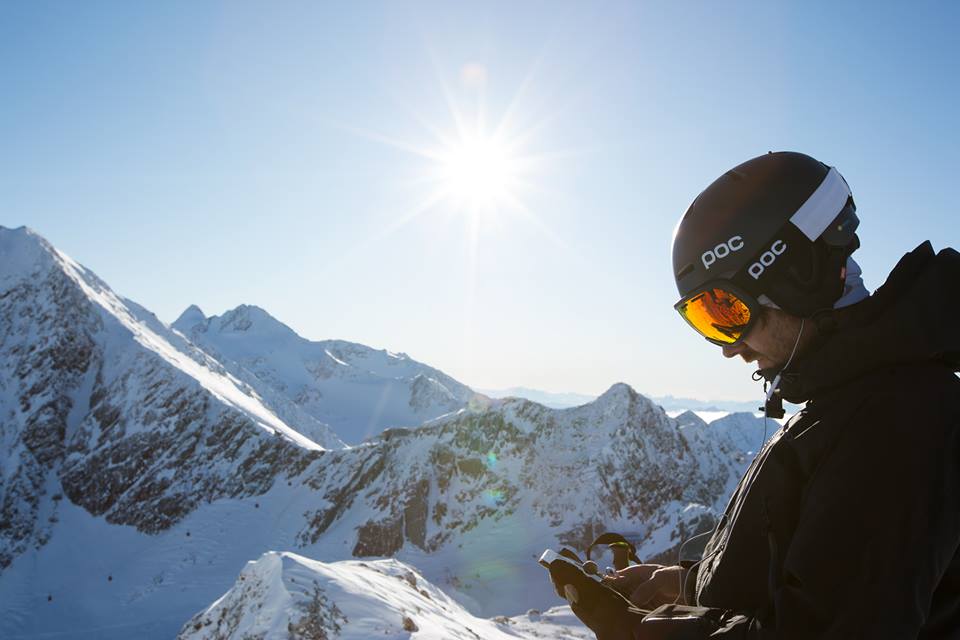
Additionally, Wilson said it is hard to say if there has been an uptick in vertical feet that users are skiing in a day. “I don’t know if there is a significant enough trend to know if customers are skiing more in a day to say that is happening definitively.”
When it comes to the speed at which users are traveling, there is an interesting trend. Average speeds have decreased, while max speeds have mostly stayed the same. “There’s a difference between top and average speeds, but average speeds have reduced over the last 10 years,” Wilson stated. “That’s the average speed for the whole day. Top speeds have stayed pretty much the same. There are some anomalies, but they haven’t changed much. I think the average speeds have come down slightly due to mountain density issues where the mountains are busier and slowing the flow of skiers and snowboarders.”
Besides the average speed change, Wilson didn’t consider that the behavior had changed too significantly. “My honest opinion is I don’t believe there has been a significant change in people’s habits. Younger adults may be more interested in top speeds, while older people are more interested in distances. Our average age of customers is 40, so they are not that young and more interested in the distance. Some people will be changed because they want to see how fast they can go or how far, but overall, not that much. I talk to people constantly about it, and most people turn the thing on, put it in their pocket, and don’t think about it until they get back to the pub, chalet, or hotel.”
Epic Pass Example
The Epic Pass, offered by Vail Resorts, provides access to a network of ski resorts worldwide. It is one of the most popular multi-resort ski passes, known for its flexibility, value, and extensive coverage.
The Epic Pass tracks vertical feet skied through the Epic Pass app, which utilizes GPS technology and Radio Frequency Identification lift scans. The RFID chip embedded in the Epic Pass logs each lift ride when a rider passes through the lift readers. Since each lift has a known vertical rise, the app adds the vertical distance associated with each lift ride to calculate the total vertical feet skied. If the Epic Pass app is used, it can also use the smartphone’s GPS to track the rider’s movement on the slopes. The GPS data provides real-time information about the location, speed, and distance skied. This GPS tracking complements the RFID data by providing a comprehensive and engaging overview of the ski day.
Will Ellis, an emergency room doctor from Fenton, Michigan, noticed this feature after he took a ski trip to Colorado last January. He found it was a good way to assess how hard he skied on any particular day. It was then that he made a decision. “After I returned to Michigan, I started to think a lot more about vertical feet,” Ellis said. “I decided that on my upcoming April trip back to Colorado, I would choose one day to see how much vertical I could ski in a day.”
Ellis did his research and decided that lapping the Birds of Prey lift at Beaver Creek Resort would give him the greatest opportunity to maximize his vertical. He chose a less-crowded weekday with perfect conditions and ended the day with 46 lift rides and 99,143 feet of vertical.
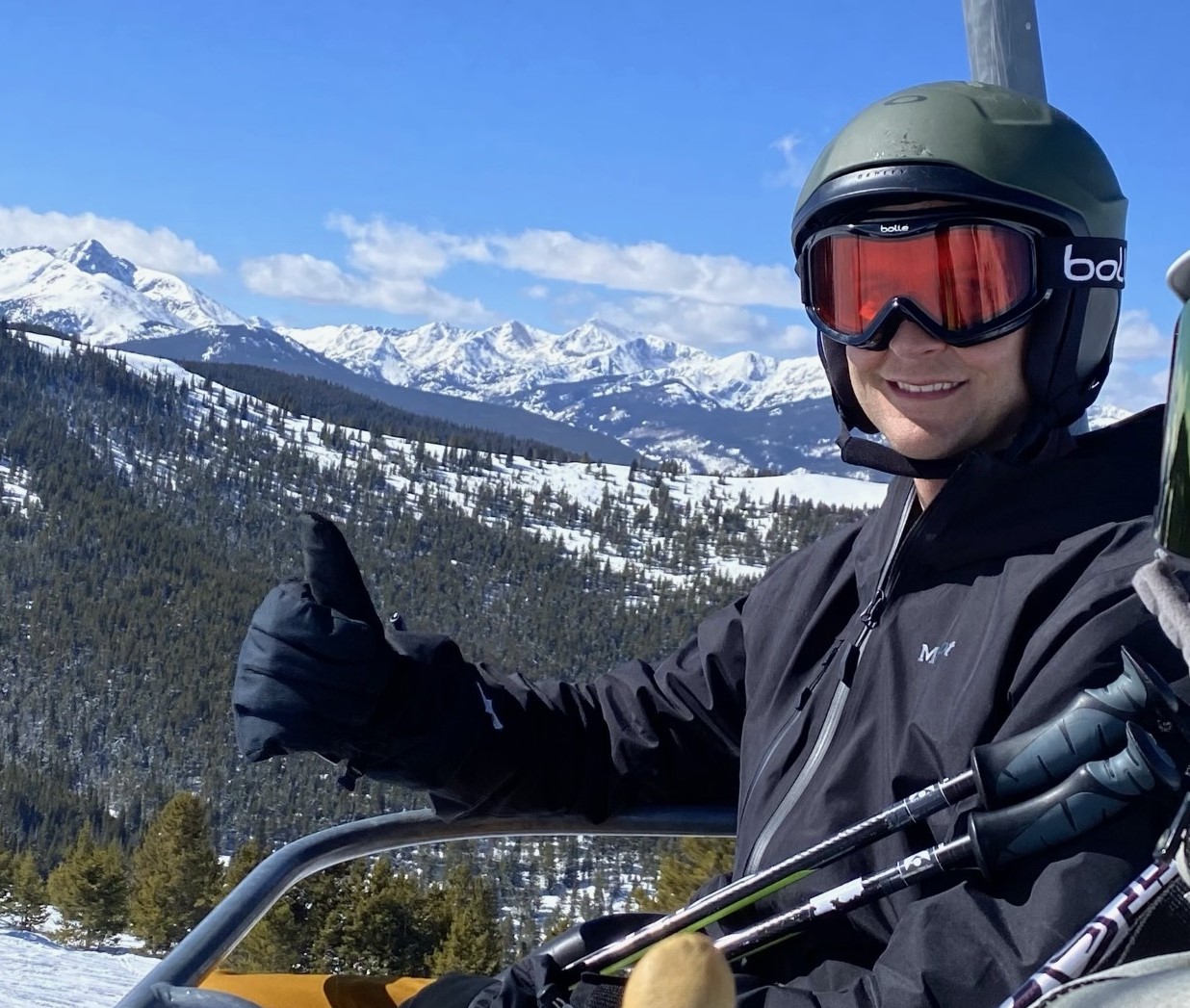
It’s not just Ellis who has logged impressive days. There exists a plethora of evidence of others going for big verticals on many other apps, social media, and news stories. It is safe to say that those accomplishments would never have happened or been attempted without a way to track them.
What About Safety?
With the perceived increase in skier days, vertical feet, and distance due to these apps, one might wonder if the industry has seen a rise in injuries and fatalities. The National Ski Area Association provides slope safety statistics to help answer. Fortunately, data from the 2022-23 season indicate that 88% of all skiers and riders wear a helmet, a slight dip from the record 90% the year before. This was after 20 consecutive seasons of record helmet usage, when back in 2002-03 it was only 25%. Additionally, 96% of all participants under 18 wear a helmet. The NSAA has not yet released data from the 2023-24 season.
Looking at catastrophic injuries, which are described as life-altering injuries, including a broken neck or back resulting in full or partial paralysis, severe head injuries, and injuries resulting in the loss of limb, the numbers show no significant increase over the years. The 10-year average was 0.73 catastrophic injuries per million skier visits, roughly 42 per year. Most incidents involved a male skier on intermediate terrain, with speed, loss of control, and collisions with trees as the primary reasons.
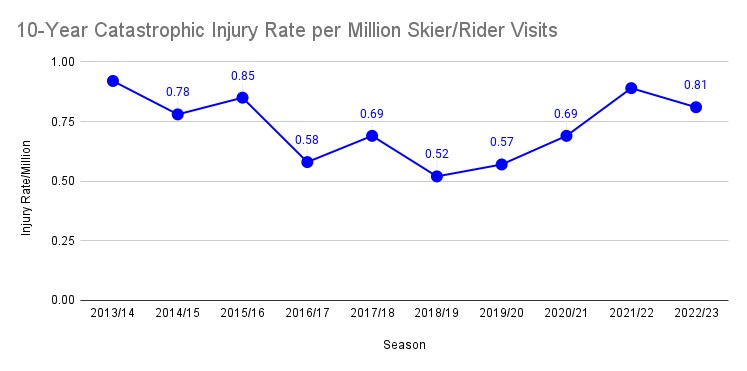
When it comes to fatalities, just like catastrophic injuries, the 10-year average has also been 42 per year and has not seen a significant increase over the last decade. Again, speed, loss of control, and collisions are the most common causes of fatalities, while bumper snow years can see higher snow immersion deaths.
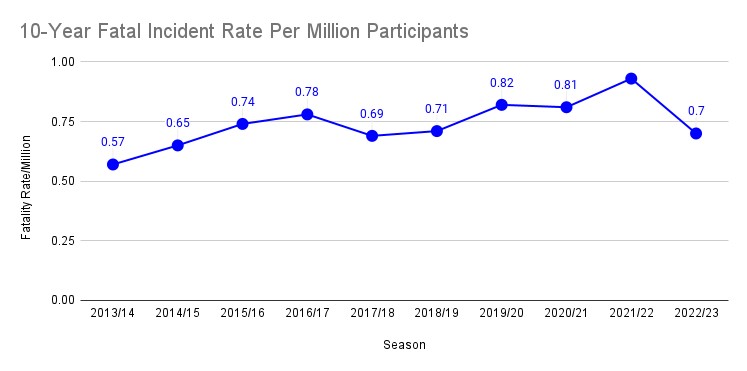
Thankfully, it does not appear that the increased use of ski-tracking apps has caused more injuries or deaths in the industry. Safety has been a top concern for app makers, as confirmed by Wilson. “Apps are getting much more technical and sophisticated,” Wilson added. “We don’t show live speed for safety reasons. You can see your speed after you’ve finished a run. A lot of apps now are starting to think about the safety aspect of this. [Ski Tracks] is the largest app out there, so we must consider safety. Everything from having information about navigation to at-large risks and more information around safety, not just the skiing itself.”
Peak Skis Vertical Feet Challenge
Another example of how apps have changed skiing is a contest challenge sponsored by one of the industry’s newest ski manufacturers. For the previous two seasons, Peak Ski Company has held its 4 Million Vertical Feet Challenge, where anyone who skis over four million vertical feet in a season is awarded a free pair of Peak skis. Dozens of pairs have been awarded to dedicated riders.
The contest was inspired by Jackson Hole, Wyoming, resident Robert “Buddah” Baker, who isn’t your typical skier. He easily skis over 100 days a year, and not just a couple of runs each day; he rides from open to close. In the 2020-21 season, he logged 4.4 million vertical feet and has only improved since then. Last season, he went over five million.
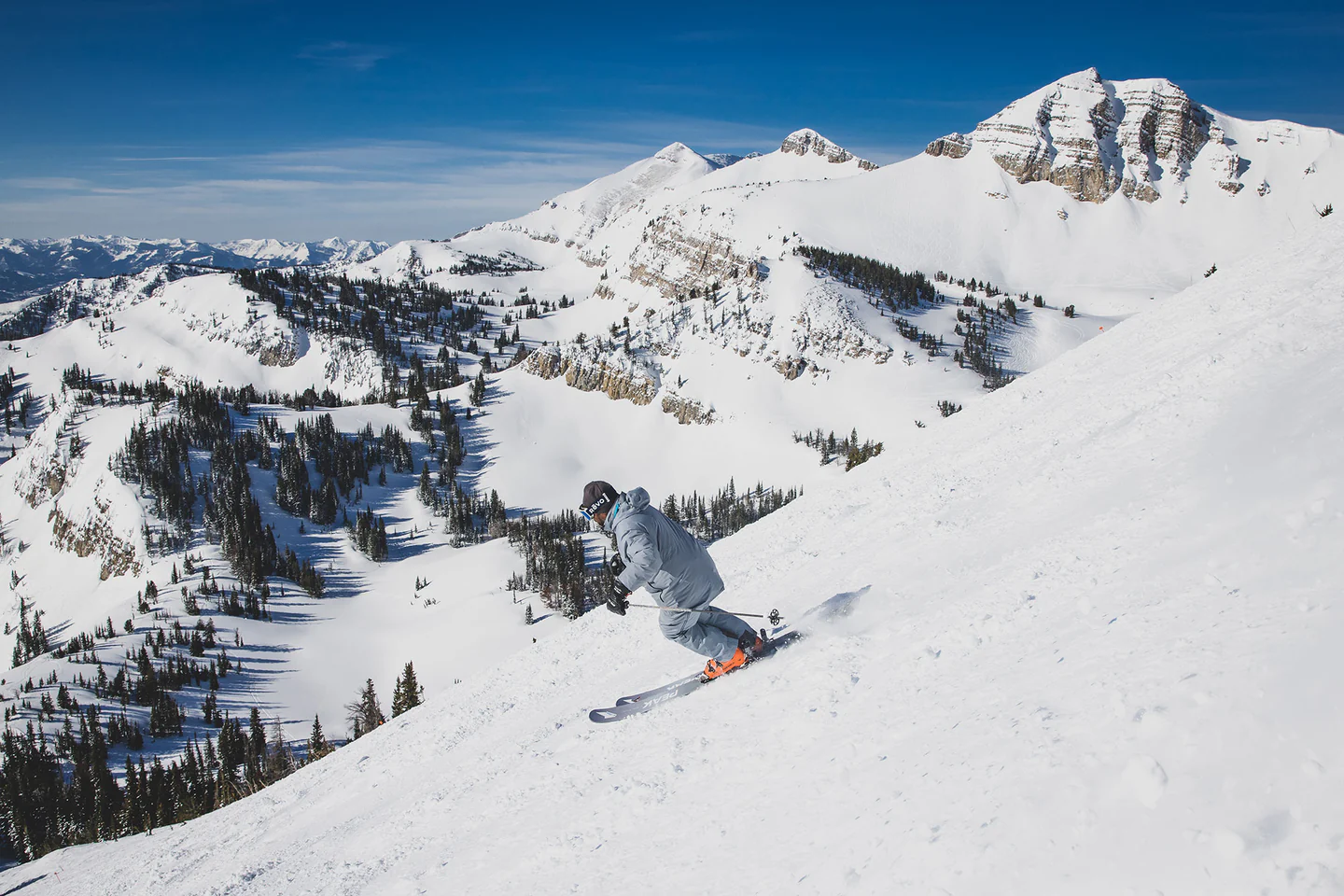
The company sponsored the challenge to reward the most dedicated riders, encourage people to ski more, and create stoke for the industry and mountain community. To qualify, entrants must use one of the Peak Skis-approved mobile apps to track their vertical and be featured on a public leaderboard that Peak Skis can access.
Claiming bragging rights and a free pair of skis simultaneously could have only been possible with the technology that tracking apps provide. The incentive motivates individuals to push the limits.
All evidence points to tracking apps influencing behavior on the mountain. Whether that be vertical, speed, or lifts, having the data measured brings out the competitive spirit in many. However, not all riders are swayed. A poll in the Facebook group Epic Pass Holders, which has nearly 90,000 members, asked, “Do you track your ski stats (days, lifts, vertical, etc.)???”

Over 120 responses were garnered, with 81% of respondents saying they track their stats in some way. Of the 81%, the majority, 48%, are casual trackers, while 33% said they check their stats more obsessively. Only 19% of respondents said “no,” indicating the technology does not influence them.
No matter where someone falls in their app-tracking journey, from the obsessed to the indifferent, there is no wrong way as long as they are experiencing gratification. Like it or not, these tracking apps have significantly transformed the skiing experience by merging technology with the thrill of the slopes. They provide skiers with real-time data on their speed, distance, and vertical feet, allowing them to monitor their progress and set new goals. They can also enhance safety by enabling location sharing and emergency alerts while adding a social aspect through features that let skiers share their achievements and compete with friends. As time goes on these tracking apps will become even more integrated into the skiing world, making every trip down the mountain more interactive and exciting for those who wish to engage with the technology.
